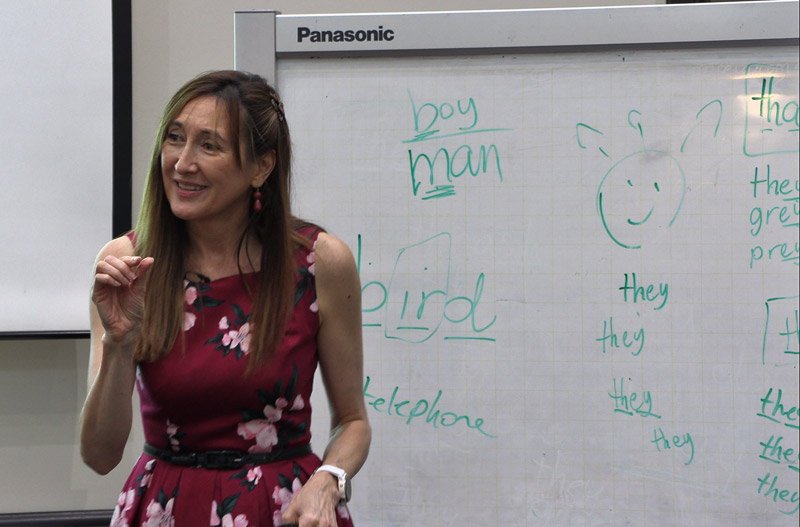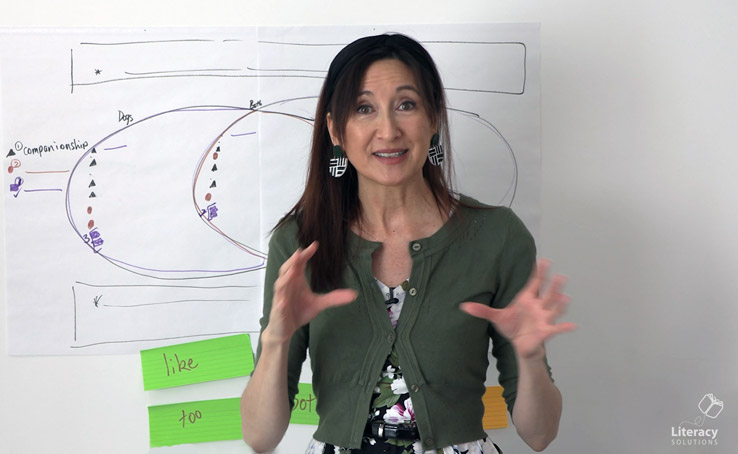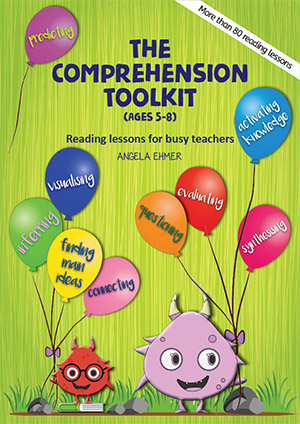Modelled Writing …
When does the teacher stop?
The simple answer is that we don’t. The aim of modelled writing is use the “think aloud strategy” to model what goes on in the head of the writer. Not only does this give the teacher opportunities to explicitly talk about elements of the writing process, but also allows students to observe the way a writer crafts and records a text. The teacher is able to offer purposeful instruction which consolidates existing knowledge and extends it.
Don’t students know how to write as they move into upper primary and secondary school?
Just as students are expected to read increasingly more challenging texts as they move through the school, they are also expected to write increasingly more challenging texts. As the gradient of difficulty of each of these tasks continues to increase, teachers must ensure that student knowledge and skill increases to match the task. What is expected at Year 3 on a persuasive text is very different to what is expected at Year 7.
If we expect to see more sophisticated, complex and strategic writing as students move through year levels, mustn’t we teach for it? Or, do we assume that students will independently improve as they become more proficient readers? Or is “showing” what to do and how to do it replaced by “telling”.
Let’s look at how the “think aloud strategy” can be used in response to observations of some writers during NAPLAN.
Many have observed students spend the allotted time planning for the NAPLAN Writing Task, only to put the plan aside when it is time to draft? What does this behaviour suggest about these writers? Could we infer that these students may not understand the purpose of the plan and how it relates to the writing process and writing task? What wonderful information to guide our planning! Here is an opportunity to “model” the purpose of the plan, the creating of the plan, the using of the plan and if appropriate, how or why a plan may be modified.
What a valuable opportunity to use the “think aloud strategy” as students hear and observe us being strategic about the type of plan which best serves our writing purpose. What a fabulous opportunity to highlight and be repetitious of the writing mantra … Why am I writing this (purpose) and for whom (audience)?
How wonderful to be able to highlight key teaching points by asking the questions we want the students to be asking themselves during writing. How great that we not only can “model” the asking of the question, but the answering, too.
If I want Ms Gillard to take notice of my opinion, I should sound respectful and knowledgeable. To sound respectful I could use words like … and sentences like … To sound knowledgeable I should use words like …. and sentences like …
My opinion is really important so I want to sound strong. To sound stronger I could change the words …. to …. Changing those words helps me to get the right voice. Getting the right voice makes me sound like I really care about this issue.
So why are we thinking all these things out aloud?
Ultimately, this is the inner dialogue we want students to have. These are the conversations we want writers to have on their own. This is the purposeful self-talk which prompts students to be reflective and strategic about writing, purpose and audience.
Couldn’t we just tell students what they need to do?
Modelling is very powerful.
By modelling, the expert writer lets less experienced writers in on the big secret … What goes on in the head of a more experienced writer? By modelling, we demonstrate options for planning, strategic problem solving, self-monitoring, reviewing, revising and proofreading. We show how techniques can be used or applied; we work through challenges and teach for the importance of conventions. And we do it all within the context of authentic writing!





Fabulous- just as we need to model how good readers think by using think alouds as we model the reading process using big books and quality literature. We often keep what is in our heads as readers and writers a secret. This wealth of knowledge needs to be explicitly modelled for our students if we aim for them to become purposeful and reflective readers and writers.
I think that there is a perception that using ‘think aloud’ strategies during both reading and writing lessons is useful only for lower grade teachers. I agree that good teaching at any year level requires the teacher to model what they are thinking as they make choices in reading and writing lessons. The ‘think aloud’ strategy is a powerful tool for all teachers.
I couldn’t agree more with the notions that modeling and the ‘think aloud’ strategy are such valuable and vital tools for teachers. I have found students in the upper grades require this just as much as younger students. So many of our students seem to have such a limited inner dialogue when it comes to purpose and audience when writing. Hopefully by letting them in on the big secret, they can only become more proficient and confident writers!